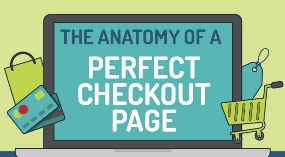You may have heard the rumor that email marketing has gone the way of the dodo. That if you want to reach your audience you should focus your time and effort on the growing social media market. Well, I’m here to tell you that email marketing is here to stay! In fact, 73% of marketers in 2014 said that email marketing is core to their business and linked to 20% of their overall revenue. At the same time, almost 70% of consumers prefer for businesses to reach out to them via email over any other communication method. So dust off those templates, break open the subject line vault, and follow these tips to get started with your email marketing!
1) Get To Know Your Email Audience
Every business knows their target audience but not all businesses know their email audience. To gain a better understanding of what prompts your email list to take the actions you want, split your email list in two and utilize A/B testing for your subject lines, call to action (CTA) text, images, etc. A/B testing is when you compare two variations of an item to see which one performs better. Examples would include one list getting the CTA of “Shop Online” versus “Make a Purchase” or using a text link versus an image button for your CTA. You’ll also want to experiment with sending emails on different days of the week and at varying times. This will help you create your own email benchmarks for later use.
2) Don’t Overload Your List
With all things in life, there is a fine balance when it comes to the frequency in which you email your list. Most email marketers recommend sending 2-4 emails a month but every list is different. Keep an eye on your unsubscribe number and if you’re losing more members in a month than you’re gaining, you’re sending too many emails. If you do feel like you’re sending too many emails but have one that you really want/need to send, think about segmenting out a section of your list that you feel will be most responsive to receiving the email. This will help minimize your unsubscribe number while allowing you to promote your offer, special, or event.
3) Optimize For Mobile
Almost 50% of emails are read on mobile and that number is only growing. Make sure your emails are readable for smaller screens by using a mobile optimized template through your email marketing provider or creating your own HTML template. Optimize for mobile even further by adding pre-header text that explains the purpose of the email. This text will show up as the email preview text in inboxes and gives mobile users more of a reason to open your email over others.
4) Subject Line Is Key
The number one thing that affects email open rates is the subject line. The best subject lines avoid using all capital or lowercase letters and are simple, direct, and actionable. But that doesn’t mean you can’t make it stand out! Figure out what makes your offer/special/event unique and highlight that in the subject line. Consider adding an emoji as well, but keep in mind that it might not render for all of your subscribers depending on their email provider.

5) Content Is King
Your email members joined your list because they want to stay informed about what is happening with your business. Don’t focus on making your email flashy and filling it with images. Instead, focus on adding quality content that your audience is interested in and that will lead to conversions. Save the flash for your website and use your email as a way to drive users to your site through the use of click-through links.
6) Highlight Your Call–To–Action
What is your reason for sending your email? Whatever it is, make sure your email audience knows it as well! Draw attention to your call-to-action – whether it be making a reservation, purchasing an item, or shopping a sale – through utilizing buttons and different fonts and font colors. You’ll also want to place your call – to – action towards the top of a lengthy email to ensure it is seen.
7) Think About Life After Your Email Is Sent
Your job isn’t over once the email is sent! Increase reach of your email by posting it on your social media channels and website, followed by a call – to – action to join the mailing list. Begin compiling your own benchmarks by checking and keeping track of your email stats including open rates, click-through rates, and conversion rates. Once you have these, you’ll be able to optimize your email marketing efforts in the future.
(143)
Report Post




